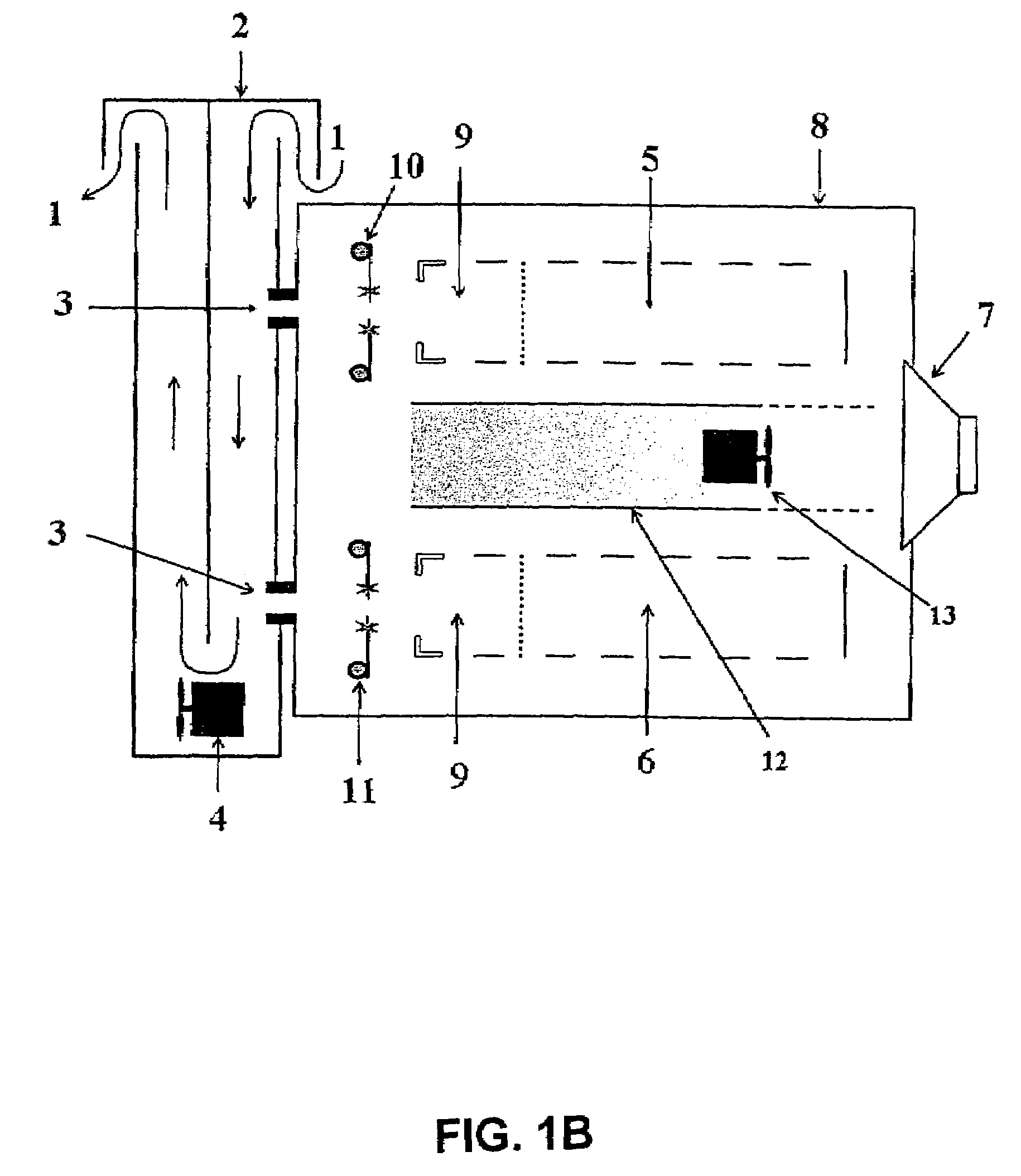Detection and identification method for in-transit determination of chemical contraband, decaying animal and vegetable matter, and concealed humans in cargo shipping containers and other secure spaces
a detection and identification method technology, applied in the field of detection and reporting contraband, can solve the problems of inability to monitor the contents of shipping containers, storage containers or other cargo containers, no methods or procedures, and high response speed, so as to improve the sensitivity and specificity of the analysis process and achieve effective detection
- Summary
- Abstract
- Description
- Claims
- Application Information
AI Technical Summary
Benefits of technology
Problems solved by technology
Method used
Image
Examples
Embodiment Construction
[0024]Chemical contraband materials 34 packaged inside a shipping container 30 exude small amounts of the actual contraband chemical or chemicals associated with the contraband such as precursor chemicals, decomposition products or taggants. From a practical point of view, it is not possible to completely seal a package so that none of the chemicals escape the package. In actuality, minute amounts of the chemicals escape into the atmosphere of the container. Over time, the chemicals will diffuse throughout the container and concentrations of the chemicals will build up.
[0025]Technology exists in the form of small, low-power-consumption, hand-held chemical detectors that have been developed for detection of and protection of war fighters from weapons of mass destruction (WMD). The technology, Ion Mobility Spectrometry (IMS), has been in use by worldwide military services for at least 20 years. The technology is routinely used by law enforcement and security personnel in searching for...
PUM
 Login to View More
Login to View More Abstract
Description
Claims
Application Information
 Login to View More
Login to View More - R&D
- Intellectual Property
- Life Sciences
- Materials
- Tech Scout
- Unparalleled Data Quality
- Higher Quality Content
- 60% Fewer Hallucinations
Browse by: Latest US Patents, China's latest patents, Technical Efficacy Thesaurus, Application Domain, Technology Topic, Popular Technical Reports.
© 2025 PatSnap. All rights reserved.Legal|Privacy policy|Modern Slavery Act Transparency Statement|Sitemap|About US| Contact US: help@patsnap.com



